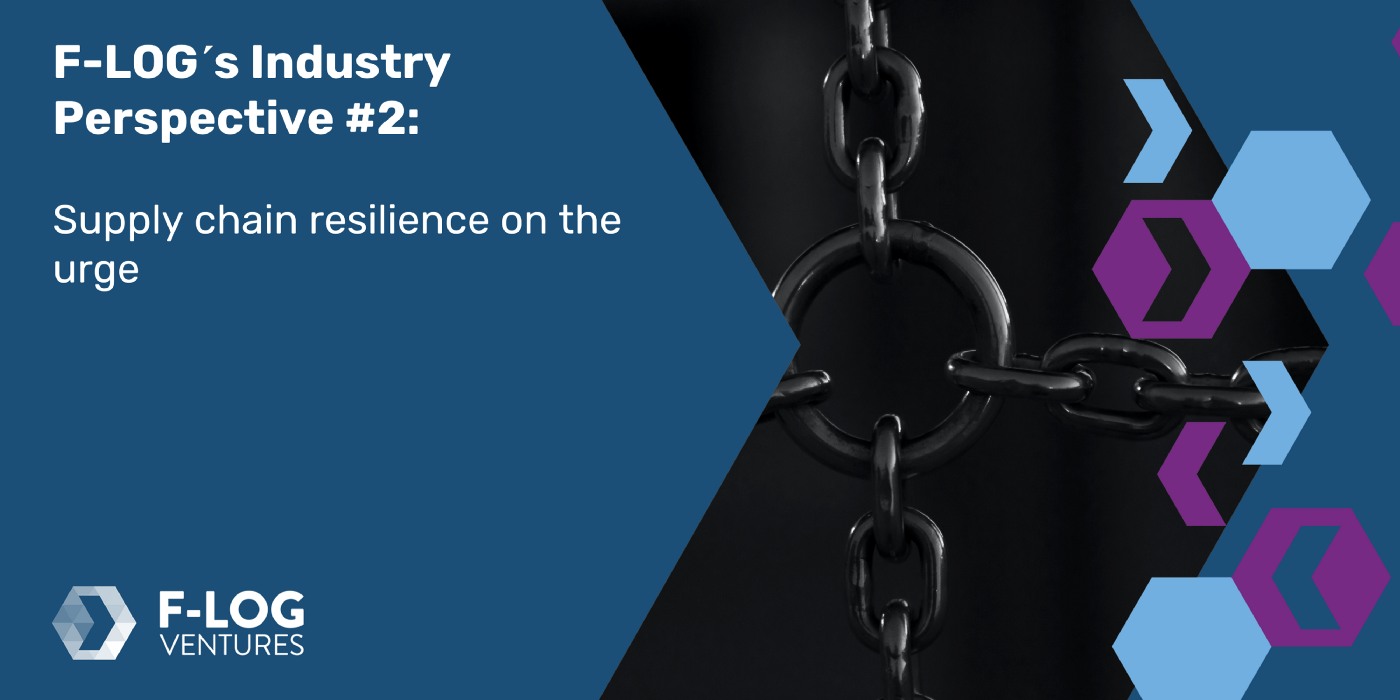According to a McKinsey Research Paper, 93% of global supply chain leaders are planning to increase resilience along the supply chain. Accelerated by the current pandemic, it is a trend no manager should be missing out on, regardless of size, location, or industry of their company. That’s why we, too, took a closer look at the biggest drivers, problems, opportunities, and startups in this field.

One key tool to increase resilience is visibility within the supply chain: It refers to the exchange and availability of information and data within and between companies as well as between companies and stakeholders. A significant aspect of this approach involves tracking and tracing of the supply chain and the decision who to share this information with. Thereby, managers can identify critical paths in the supply chain and work on solutions or financial and operational buffers. Other advantages include enhanced availability, flexibility, and more control of the supply chain as well as strengthened risk management and improved transparency. Properly applied, supply chain visibility leads to supply chain resilience which can result in a competitive advantage.
Covid-19 key driver for increased awareness of this topic
Huge bottlenecks and chaotic developments in nearly every supply chain worldwide because of COVID-related shortages and/or outages shed a light on the importance of keeping track of the product journey from the very start to end-use. But there are also other interesting aspects supporting this trend:
- The number of companies using assistance in supply chain mapping doubled from 22.5% in 2019 to 40.6% in 2021. More than half of the organizations (57.6%) reported that COVID-19 was the reason for investing in supply chain visibility solutions.
- Supply chain disruptions like the pandemic, natural disasters, or cyber-attacks are very costly. McKinsey calculates that companies can lose 42% of a year’s EBITDA over a period of ten years.
- If we take a closer look, the percentage of organizations experiencing 10 or more disruptions in supply chain transactions has risen from 4.8% in 2019 to 27.8% in 2020, which reflects an increase by over 20%.
- Trends such as customer awareness and aspects of sustainability are also main drivers of supply chain visibility.
- But also, RFID, cellular devices, and services, as well as sensors, are becoming more ubiquitous. According to The Business Continuity Institute, about 55.6% of organizations are already using technology to assist them with analyzing and reporting supply chain disruptions.
All these aspects taken together demonstrate the increased awareness and urgency to bring more visibility into the supply chain.
Startups are challenging the status quo
The startup sphere applies different approaches and technologies to achieve visibility. From what we have noticed, they specifically use IoT sensors, blockchain and RFID technology for certain use cases. IoT sensors´ prices went from $1.30 in 2004 down to $0.44 in 2018, which makes them an interesting potential investment. But especially supply chain visibility platforms with a more general approach like Project44, FourKites, e2Log and Shippeo recently raised stunning funding rounds.
- Project44 raised nearly $400m with the biggest investor being Goldman Sachs and Emergence. The scale-up offers a visibility platform for shippers and third-party logistics firms. They connect, automate, and provide visibility into key transportation processes to accelerate insights and shorten the time it takes to turn those insights into actions.
- FourKites secured funding of more than $200m with Bain Capital Ventures and Qualcomm Ventures as the most recent investors. FourKites is a supply chain visibility platform designed for transportation into yards, warehouses, and stores.
- Shippeo reached nearly $70m in capital with Nordic Ventures as one of the funders. Shippeo is a supply chain visibility platform that provides shippers instant access to predictive information of all deliveries.
These examples underline the relevance of venture capital for this industry to grow further, but also the importance of this topic in general.
There are many challenges along the way to real resilience
Although supply chain visibility seems to be the focus of many, there are still quite a few major and minor challenges to be addressed. Especially the absence of technological readiness of many infrastructures and incomplete or low-quality data fail to support, or rather complicate this development.
Also, supply chain operations still lack adequate planning while the different connections are missing cohesion. Information in most organizations tends to be confined to the respective departments. The sales department has its own projections and budget, production has its own schedules, and buyers have supplier costs and delivery schedule data. This data fragmentation serves the purpose of the individual departments within an organization rather than the bigger picture — in this case: the entire supply chain. Additionally, each supplier and customer have their own information which they usually do not share with other supply chain partners at all. Everyone lives in their own bubble with their very own information with just little or no interconnection with the other partners.
Looking at this trend, interconnectedness is key and thus must be the goal. Since costs related to the supply chain are believed to account for 30% — 80% of sales, amalgamating the data of all departments is crucial for success.
What can we take from this?
Although total supply chain visibility exists in theory, in practice, companies must use the right visibility application to find the right level of transparency for the right use case in order to receive a real value from it.
Departments need to collaborate rather than go it alone, to create proper and useful supply chain visibility. However, the biggest challenge remains that most of the existing data is tracked elsewhere. If data were gathered and patterns identified, the supply chain could be better understood, leading to adequate visibility and understanding of the whole process.
The topic is very interesting for venture capitalists since there is a large number of startups trying to get a foothold into the supply chain visibility market. Compared to the situation a few years ago when software for this endeavor was not mature enough, startups nowadays have figured out how to manage and use it properly. And since everybody experienced the shortages of supply chains firsthand during the COVID-19 pandemic, many entrepreneurs are setting up a supply chain visibility startup — sometimes to great success, like Project44.
The industry is fully aware of the importance of supply chain resilience, and investors and decision-makers are hence ready to invest in proper solutions.F-LOG VENTURES
News and updates related to F-LOG Ventures, LogTech and Venture Capital.



